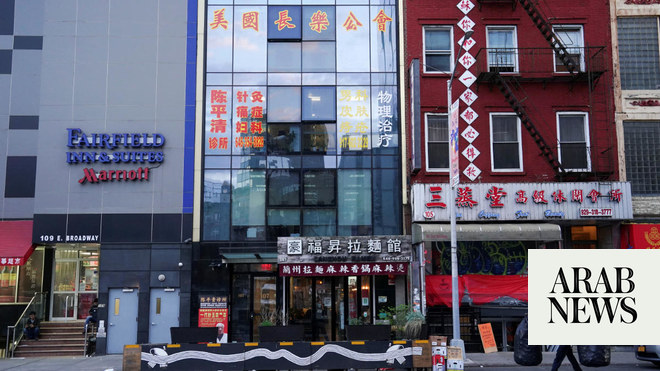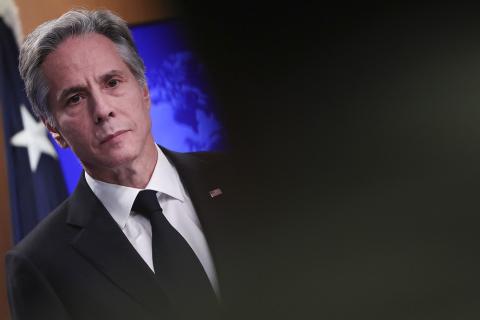
Donald Trump and his team appear poised for a major foreign policy announcement, which could even come this month. A new international aid strategy — that would see funds distributed increasingly on political allegiance to Washington as opposed to humanitarian need — could reshape policy to the largest extent for decades, albeit with the risk of undermining US soft power.
The sweeping premise of the apparent new Trump strategy is that several decades of US foreign aid, including that used to combat communism and terrorism, has failed in its core objectives. It therefore argues that a new policy framework is needed, especially with the rise of China, to “realign foreign assistance for a new era of great power competition.”
In a nutshell, the Trump team appears set to move toward an approach that will see much more aid distributed to “friends and allies,” especially those which support broader US international goals versus those of rivals, especially China. This will move away from a principle, not always followed in practice of course, that US financial assistance is allocated according to humanitarian need, not political allegiance, and may particularly impact countries in the developing world, from Africa to Asia and South America.
The anticipated policy shift follows Trump’s speech at the UN General Assembly last year, when he said that “we will examine what is working, what is not working, and whether the countries who receive our dollars and our protection also have our interests at heart.” It is not clear what criteria the administration will use for countries to display their loyalty to Washington, although former US Ambassador to the UN Nikki Haley previously said that not voting with the US in supranational forums could be part of this. Key nation South Africa is one country that quite often opposes Washington at the UN, despite receiving significant US aid.
Critics of the new strategy pre-emptively argue that it could further undermine US soft power, highlighting that a key problem Trump faces is that, while he enjoys significant popularity in a small number of countries, including Israel and Poland, numerous of his policy ideas and occasionally wild rhetoric have caused a wider spike in anti-US sentiment across much of the world. And the tragedy is that this is creating a disabling (rather than enabling) environment for cooperation and information sharing with Washington.
Critics of the new strategy pre-emptively argue that it could further undermine US soft power.
Andrew Hammond
The administration’s expected new approach builds on a decision last year to create a $60 billion agency aimed at strategic investment in developing countries. The International Development Finance Corporation (IDFC) is another manifestation of Washington’s response to China’s growing influence and underlines the return to a US aid policy that has commercial diplomacy and geopolitics at its heart.
This, of course, recalls the earlier era of the legendary Marshall Plan, which saw US commercial and development interests converge in the early Cold War era of the 1940s and 1950s. IDFC will become the pre-eminent US government development finance institution, moving forward US interests in multiple ways.
This includes supporting US firms operating in key developing markets and enhancing US geopolitical influence vis-a-vis other countries, including China, which is embedding its own engagement in emerging markets. Such economies have driven about 80 percent of global growth since the 2008 international economic crash.
It is China’s $1 trillion Belt and Road Initiative (BRI) and institutions such as the China-Africa Development Fund that are in the sights of US policymakers. BRI, for instance, is an ambitious development through which Beijing is boosting trade and stimulating economic growth across Asia, Africa and beyond by building massive amounts of infrastructure and connecting it to countries around the globe.
According to some forecasts, the initiative has the potential to massively overshadow even the Marshall Plan, given that it potentially comprises about 65 percent of the world’s population, a third of its gross domestic product, and helps to move about a quarter of all its goods and services. Indeed, some assert Beijing’s scheme is the biggest development push in history.
Take the example of Pakistan, for instance, where China has already made commitments of about $60 billion under the BRI. While this is to be largely spent on infrastructure, it has cemented warming ties with Islamabad — a longstanding US ally during the Cold War.
It is in this context that the new US approach should be viewed, and it comes after US Secretary of State Mike Pompeo last year articulated revamped plans for a “new era in US economic commitment to peace and prosperity” in the Indo-Pacific region and beyond. The latter is the Trump team’s preferred term for the massive, strategically important geography from the US West Coast to the Indian subcontinent.
The anticipated new US strategy is likely to not only fuel bilateral tensions with Beijing in this broad geography and beyond, but also carries the risk of undermining US soft power at a time when Washington is facing multiple, complex foreign policy challenges where it would benefit from a broader range of engaged and supportive allies.












